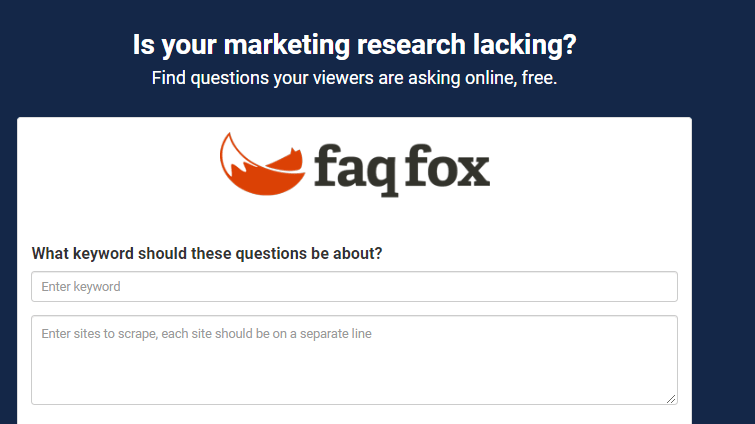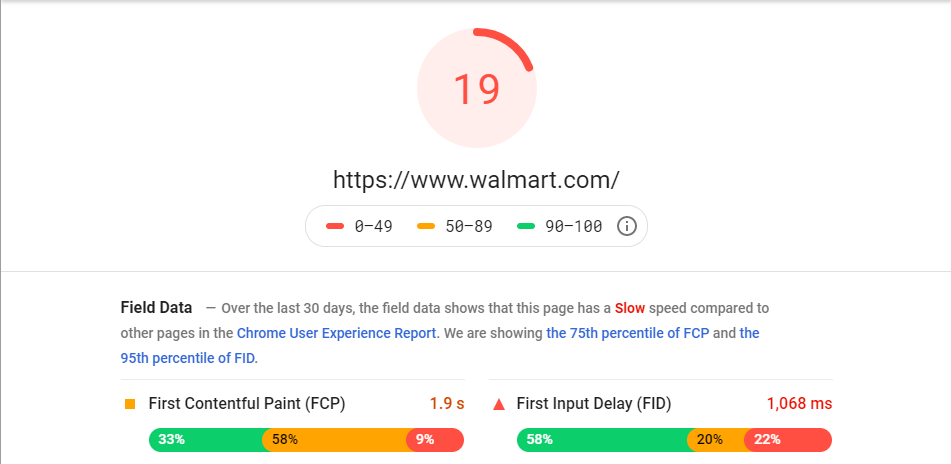Ecommerce SEO Audit: Your Ecommerce SEO Audit Checklist
If you answered no, don’t give up on ecommerce SEO yet. Instead, it’s time to conduct an ecommerce SEO audit to see where your strategy needs to improve to drive the results you desire.
Luckily, we’ve got the ecommerce SEO audit checklist (and SEO audit video) you need to get started! Keep reading to learn what aspects of your SEO you need to check. If you want to check your ecommerce SEO instantly, use our free SEO checker!
Looking for an all-in-one SEO audit tool? You've found it.
SEO Checker provides data on key metrics to give you:
- Complete SEO score
- Content Grade
- Site Speed Analysis
- and more.

Ecommerce SEO audit: The on-page SEO side
If you want to know how to do an ecommerce SEO audit, start by analyzing your on-page SEO efforts. On-page SEO includes any optimizations you do on your website to help improve its ranking. Here are a few key areas you’ll want to analyze to ensure you’re getting the most from your SEO campaign:
☑ Evaluate your keyword usage
The first step of how to do an ecommerce SEO audit is to evaluate keyword usage on your website. Keywords trigger your pages to appear in relevant search results in front of relevant leads, which can lead to more website visits and packed shopping carts.
Get the most out of your ecommerce SEO by auditing your pages for your core keyword to ensure they’re used adequately on your pages, as well as in the right places, like your meta tags.
You can use a tool like Google Search Console to evaluate your page rankings to see which pages on your site don’t rank well in search results. When you can identify those pages, you can look at the page’s keyword usage and see if you use it enough.
What to do if your keyword isn’t integrated on the page enough… If you don’t have the keyword on your page often, you’ll need to integrate it throughout to rank for that core keyword. From your product title tag to your product description, you’ll want to ensure you’re using that core keyword.
What to do if your keyword is integrated on the page enough… If you find you’ve used the keyword frequently, you may need to see if there are other related keywords to target. Google Search Console can help you know what queries drive people to your pages, which can help you find new keywords.
☑ Analyze your title tags and meta descriptions
The next part of your ecommerce SEO checklist is to audit your title tags and meta descriptions.
These two meta tags are the first thing users see in search results. You’ll want to evaluate these tags to ensure that you’re creating compelling title tags and meta descriptions that entice people to click on your listing.

Google Search Console can help you evaluate clicks for your listing. When you can see the click-through rate (CTR) for your page, it will help you see if your tags generate enough interest to click. Keep in mind that your position in search results will influence your CTR some.
If you rank on page two, for example, you’ll likely see a lower CTR because fewer people reach the second page of search results. In comparison, a listing on the first page of search results will naturally have a higher CTR.
What to do if your CTR is low… If your CTR is low, you may need to reoptimize your title tags and meta descriptions to help generate more clicks. Make sure your keyword appears in both tags, so users know your listing is relevant. Make your titles and meta descriptions descriptive too, so people know what to expect on your page.
What to do if your CTR is high… If you have a high CTR but low conversions, you may need to reevaluate your title and meta. Your title and meta may not match what’s on your product page, which causes users to click but not buy. You may need to completely revamp your tags to match your product page and appear in more relevant search results.
☑ Evaluate your on-page content strategy
The next part of your ecommerce SEO audit is to analyze your on-page content. Content plays a critical role in your search result rankings. Your audience wants valuable information, and by creating content for them, you share that information.
You want to evaluate your on-page content strategy to identify any gaps or places where you need to improve. You’ll want to look at your competitor’s content strategy to see what type of content they create and compare it to yours to see what you haven’t created yet.
Adding this to-do to your ecommerce SEO audit checklist will help ensure you’re creating a content strategy that drives more traffic for your business.
What to do if your content strategy has gaps… If it seems like your content strategy is missing some parts, fill the gaps! Create content to help you cover those areas and drive more traffic to your site. You can use a tool like FAQFox to find content topics and KeywordsFX to find keywords.


What to do if your content strategy doesn’t have gaps… If you don’t see any noticeable holes in content, continue focusing on creating more content for your website. Producing more content will enable you to drive more traffic to your site.
BONUS READING: ENTERPRISE ECOMMERCE PLATFORMS
Ecommerce SEO audit: The off-page SEO side
Next on the ecommerce SEO audit checklist is off-page SEO. Off-page SEO composes of factors that affect your site’s ranking but aren’t on your page, so you can’t change them directly. There are two aspects you’ll want to include as part of your ecommerce SEO audit.
☑ Evaluate backlinks
Backlinks play an essential role in helping you rank in search results. Backlinks are links from other sites to your site. These backlinks help you improve your ranking and build your trust and authority if they come from authoritative, trustworthy websites.
You can use a tool like Ahref’s backlink checker to check your backlinks and see who’s linking to your content. Just enter your domain name to see what links you have on your site. Keep in mind that you may have links to your site from authoritative and reputable sites as well as links from less reputable or spammy sites.

What to do if you have bad backlinks… Sometimes you’ll evaluate your backlink profile and find less than credible companies linking to your pages and hurting your domain score. If you find bad backlinks on your profile, reach out to the people who linked to you and ask them to remove it or you can disavow the links (though this option is usually not needed).
What to do if you have good backlinks… If you find your profile is mostly good backlinks, use this as an opportunity to earn more backlinks. Reach out to these companies with relevant content and invite them to link to your pages. Additionally, you’ll want to search for other industry experts and invite them to check out your content so you can build a diverse link profile.
☑ Analyze your social profiles
While social media doesn’t have a direct impact on your search engine ranking, many marketers think it has an indirect one. Since you can share pages from your website on social media, it has the potential to boost traffic on your pages and earn links for them, which can help improve your ranking.
As part of your ecommerce SEO audit, you’ll want to ensure that you’re analyzing your social profiles to ensure you’re posting links to your content and product pages.
What to do if you haven’t shared links to your pages… If you haven’t started sharing links to your page, now is as good as a time as ever! Whenever you create new content or have a sale on products, you can share links to your page with an engaging message to entice more people to click on your content.
What to do if you do share links to your pages… If you’re already sharing links to your profile, evaluate the performance of those links. Check your profile’s analytics to see if you’re driving clicks with your links. You can then figure out which links drive the most clicks to improve your strategy.
Partner with a team of ecommerce masters!
WebFX campaigns have delivered more than 14,936,451 ecommerce transactions in the last 5 years
Read the Case Studies

Ecommerce SEO audit: The technical SEO side
As you learn how to do an ecommerce SEO audit, don’t forget the technical side of your website.
Technical SEO affects how your site runs and how search engines find pages on your site. As an ecommerce site, you’re going to have dozens of pages with your products, content, and more, which can open the door for technical issues.
With this ecommerce SEO audit checklist, however, you’ll evaluate the technical aspects of your site to ensure they’re functioning correctly.
☑ Analyze your site for robots.txt and XML sitemap
Your robots.txt and XML sitemap plays a critical role in helping search engines understand your site.
- Robots.txt: Your robots.txt file tells search engines which pages it can or can’t crawl, which helps prevent your site from getting overloaded. You can use this to tell Google not to crawl certain pages, like shopping cart pages, wish lists, and more.
- XML sitemap: This file guides Google on which pages to evaluate and directs Google to index more critical pages on your site.
You should have both elements if you want Google to crawl your site and index your pages.
What to do if you don’t have robots.txt or XML sitemap… If you don’t have either of these elements, you’ll need to add them to your site. You can find guidelines for creating robots.txt on Google’s website, and you can use Google Search Console to set up your XML sitemap.
What to do if you already have robots.txt or XML sitemap… Evaluate them and make sure that you have them set up correctly. For example, it’s common for businesses to block Google with the robots.txt file. Verify that you’re guiding Google to essential pages on your site that you want it to find too.
☑ Analyze your indexability and crawlability
The next part of your ecommerce SEO checklist is to look at your indexability and crawlability. You can’t appear in search results if Google can’t index or crawl your site. It’s essential to evaluate this information to ensure you can appear in front of interested leads.
You can use Google Search Console to check and see if Google can crawl and index your site.
What to do if Google can’t index or crawl pages on your site… If Google can’t crawl or index pages on your website, check your robots.txt file and link internal pages on other relevant pages on your site to help Google. You can also focus on earning backlinks to help crawlers discover your website.
What to do if Google can index and crawl your site… If Google is properly crawling and indexing your website, you don’t need to do anything!
☑ Evaluate your page load time
Your site’s load time has a significant impact on your rankings in the search results, so you don’t want to skip this step in your ecommerce SEO audit! If your site doesn’t load quickly, users will bounce from your page and go to another listing. You need to deliver a fast website to give users information fast.
Users expect your site to load in two seconds, so you need to ensure your site loads quickly.
Use a tool like Google Pagespeed Insights to assess your site’s load time and see where you can make improvements.

What to do if your site load time is too slow… If your site doesn’t load quickly, take Google’s suggestions to improve your page speed. These suggestions may involve compressing large image files or reducing the number of redirects. If you find you have a laundry list of optimizations to improve site load time, you can always invest in page speed services to make the job easier.
What to do if your site load time is fast… Make sure there aren’t any additional optimizations you can do to improve your site load time! While your site may load quickly, you’ll want to check and see if there isn’t more you can do to make your site load even faster!
☑ Check for mobile-friendliness
In addition to fast load times, you need to include mobile-friendliness as part of your ecommerce SEO audit checklist. As mobile users continue to increase, you need to ensure your site works great on mobile devices, like tablets and smartphones.
If users don’t have a great mobile experience, they will bounce from your page and hurt your rankings.
Additionally, Google uses mobile-first indexing, which takes the mobile-friendliness of your site into account when ranking it. So, if you want to rank better in search results, ensure your site is mobile-friendly.
You can use Google’s Mobile-Friendly Test to see if your site loads right on mobile.

What to do if your site is not mobile-friendly… If your site isn’t mobile-friendly, make it mobile-friendly by integrating responsive design. Responsive design enables your website to adapt to whatever device a user uses. You’ll have a site that looks great and performs well on mobile and desktop.
What to do if your site is mobile-friendly… If your site is already mobile-friendly, you can move on to the next step of this ecommerce SEO checklist!
☑ Ensure your site is secure
The last item on your ecommerce SEO audit checklist is to check your site’s security.
As an ecommerce site, you must have a secure website.
Your audience inputs their personal information to order products from your company. If your website isn’t secure, they won’t feel comfortable shopping with you. Additionally, Google favors secure sites because searchers feel comfortable browsing those pages.
Figure out if your site is secure by typing in your URL and see if your name comes up with a closed lock next to it. If the lock is closed, it’s secure. Additionally, having “https” at the front of your URL instead of “http” means your site is secure.

What to do if your site isn’t secure… If your site isn’t secure, you can secure it by purchasing a Secure Sockets Layer (SSL) certificate. This certificate will ensure that when users input personal information, like credit card numbers, it’s protected.
What to do if your site is secure… If your website is secure, no need to worry! Just verify when your SSL certificate expires so you can stay on top of renewing it.
What does a successful ecommerce website need to drive sales?
We wrote you an ecommerce essentials checklist.
Read the Blog Post & Watch the Video

Get started with your ecommerce SEO audit today
Your ecommerce SEO audit will help you reevaluate your strategy’s current state so you can work to improve it. With this ecommerce SEO checklist, you’ll know where to look on your site for problems and improvements.
If you’re feeling overwhelmed by everything you need to do with your ecommerce SEO audit, WebFX is here to help. With a team of over 500 marketing experts, we can audit your ecommerce company’s SEO and provide recommendations for improving it. If you like, we can implement the changes for you!
With over 1,100 glowing client testimonials and a client recommendation score that’s 488% higher than the nationwide average, you can count on us to provide you with a great experience.
Ready to dive into auditing your ecommerce SEO? Contact us online or call us today at 888-601-5359 to speak with a strategist!
Related Resources
- 9 Ecommerce SEO Trends for 2024
- Answering Your Biggest Ecommerce SEO Questions
- Best Ecommerce Platform for SEO: 6 Ecommerce SEO Platforms
- Ecommerce SEO
- Ecommerce SEO Checklist: Everything You Need to Know to Create an Effective Ecommerce SEO Strategy
- Ecommerce SEO Strategies
- Ecommerce SEO Tools: 7 Tools That Can Help Your Ecommerce Business Drive More Traffic
- How to Do Technical SEO for Ecommerce [7 Tips for Getting Started]
- How to Optimize Your Shopify Store for Shopify SEO in 9 Steps
- Voice Search for Ecommerce: 6 Optimization Tips
Marketing Tips for Niche Industries
- Does SEO Work for Credit Unions?
- Driving Cutting-edge Results with WebFX
- Earn More Business with Pest Control SEO
- Ecommerce SEO
- Electrician SEO Services
- Electrician SEO: How to Start Using SEO for Electricians
- Everything to Know About SEO for Assisted and Senior Living Facilities
- Funeral Home SEO Services
- Healthcare SEO Pricing: How Much Does Medical SEO Cost?
- How to Build Links for Your Ecommerce Business


How Is Your Website's SEO?
Use our free tool to get your score calculated in under 60 seconds.









